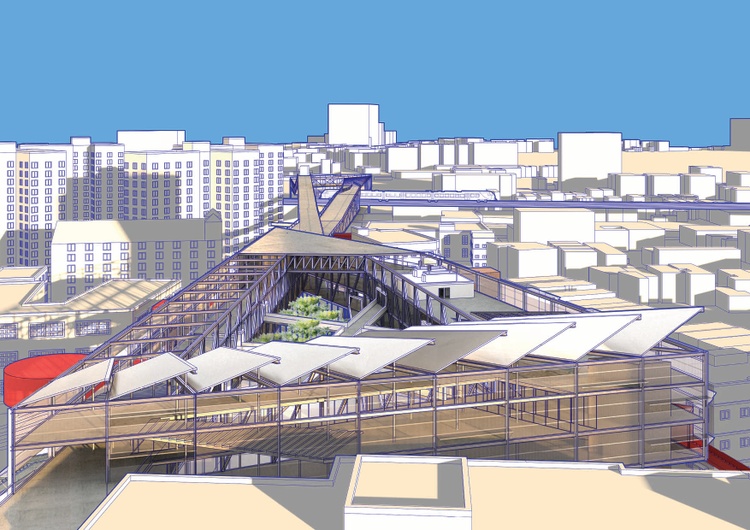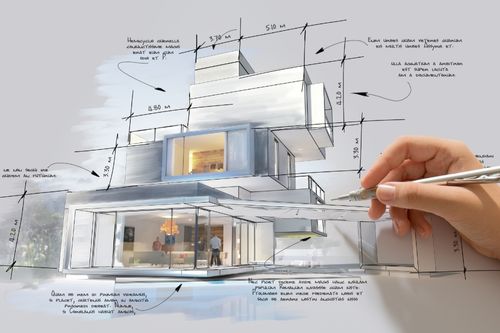Comprehending the Collaborative Process Between Architects and Designers in Modern Building And Construction Projects
The collaborative procedure in between designers and engineers is vital in contemporary construction projects, as it integrates layout intent with engineering feasibility. This partnership not just influences the visual and useful elements of a job but also plays a crucial duty in resolving sustainability challenges. By utilizing effective interaction methods and leveraging sophisticated technologies, such as Structure Info Modeling (BIM), teams can function a lot more cohesively. However, the details of this cooperation typically present one-of-a-kind difficulties that can hinder progression. Exploring these characteristics reveals understandings that could substantially impact task results and total market criteria.
The Value of Collaboration
The collective harmony between engineers and designers is important for the effective awareness of any kind of construction job. This collaboration brings with each other distinctive expertise and point of views, making it possible for the combination of innovative layout with practical design solutions. By interacting, architects and engineers can make certain that a job not just meets visual and functional demands but likewise abides by safety, sustainability, and monetary restraints.
Collaboration cultivates a shared vision, assisting in the placement of objectives and expectations from the outset. This positioning is essential in attending to possible obstacles and mitigating risks that could develop throughout the job lifecycle. Additionally, a collective strategy enables the efficient allotment of resources, optimizing both time and cost.
The importance of cooperation expands to the repetitive process of design and building and construction, where comments from engineers can inform building decisions, leading to even more practical and sustainable designs. Alternatively, designers can inspire designers to believe creatively concerning how to achieve structural integrity without compromising imaginative intent. Ultimately, the collaborative relationship between engineers and engineers is not merely advantageous; it is basic to the development of top quality, useful, and ingenious built atmospheres that meet the requirements of society.
Interaction Techniques and Devices
Effective communication strategies and tools are essential for promoting cooperation between engineers and engineers throughout the job lifecycle. Developing clear channels of interaction is vital to guarantee that all staff member are lined up with project purposes, timelines, and duties. Regular meetings, both in-person and virtual, offer chances for stakeholders to review progress, address concerns, and make informed decisions.
Using job management software application, such as BIM (Building Information Modeling) platforms, boosts collaboration by allowing real-time sharing of style alterations and technical specs. These devices promote transparency, enabling engineers and designers to imagine adjustments and assess their influence on the general task.

Shared Goals and Project Vision

Establishing shared objectives involves open discussion and an extensive understanding of each technique's contributions. Designers generally concentrate on style intent, spatial partnerships, and individual experience, while designers emphasize structural honesty, systems functionality, and conformity with laws (cda architects). When these point of views are straightened, the result is a natural task that follows both innovative desires and technical expediency
Moreover, a well-defined task vision fosters responsibility among staff member, encouraging each participant to take possession of their duty in achieving the wanted outcome. Routine check-ins and collective workshops can better enhance this commitment, permitting modifications to be made as the job progresses. Inevitably, a common vision not only enhances team effort however likewise raises the top quality of the last deliverable, resulting in effective job completion.
The Function of Innovation
Leveraging innovation has actually become vital in boosting collaboration between designers and designers. Structure Information Modeling (BIM) stands out as a critical innovation, permitting both engineers and engineers to produce in-depth 3D versions that envelop design intent and structural stability.
Additionally, cloud-based platforms allow seamless collaboration, enabling job stakeholders to gain access to and upgrade task information from anywhere. This cultivates a society of openness and liability, as adjustments can be tracked and reviewed in real-time. Additionally, mobile applications further enhance communication, providing on-site teams with immediate accessibility to task specifications and updates.
Arising modern technologies such as expert system and artificial intelligence are also starting to contribute in anticipating evaluation, aiding groups determine prospective problems before they arise. Ultimately, the role of modern technology in architecture-engineering cooperation not just boosts process effectiveness however also boosts technology, bring about even more successful project end results. By welcoming these technical improvements, designers and engineers can make certain an extra natural and productive joint procedure throughout the building lifecycle.
Study in Effective Collaborations
Various study show the profound influence of efficient collaborations in between architects and designers on job results. One noteworthy example is the cooperation on the High Line in New York City, where landscape architects, designers, and city coordinators interacted to change a deserted railway into a vivid public park. This multidisciplinary technique helpful site not just enhanced the visual top quality but also made sure structural safety and security and ecological sustainability.
Another excellent case is the layout and building of the Sydney Music Hall. The partnership in between architect JÃ ¸ registered nurse Utzon and structural engineer Ove Arup exhibited ingenious problem-solving. Their partnership permitted the famous shell-like design while dealing with intricate design challenges, inevitably resulting in an ageless architectural masterpiece.
The Burj Khalifa in Dubai better demonstrates the value of collaborative initiatives. cda architects. The combination of style and engineering competence made it possible for the project team to accomplish extraordinary elevations find here while adhering to security laws and aesthetic vision
These examples highlight the relevance of communication, depend on, and shared purposes. In today's complex building setting, such collaborations are vital to navigating challenges and supplying tasks that fulfill both functional and visionary goals.
Conclusion
In final thought, the partnership in between engineers and engineers is vital for the success of contemporary construction projects. Reliable communication methods, a shared project vision, and the integration of sophisticated modern technologies are important elements that facilitate this collaboration.